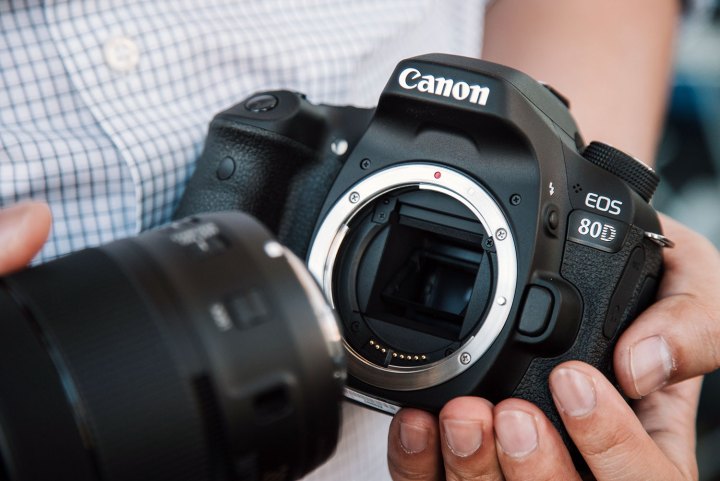
Canon’s move to add an electrical connection between the camera body and the lens was actually named after Electro, the Greek goddess of the dawn, earning the series the name Electro Optical System and an EOS acronym that still continues today. At the time, Canon was the first to use an electronic mount.
The Canon EOS 650, a film SLR, and the company’s line of EF lenses first debuted in March 1987. The company has now sold over 80 million EOS bodies and 120 million EF lenses.
“When the EOS system originally launched in 1987, one of its most important differentiations from other leading camera systems at the time was the introduction of fully electronic communication between the camera body and its interchangeable lenses and other system accessories such as battery packs, etc.,” Chuck Westfall, a Canon USA spokesperson, told Digital Trends.
“This design improved overall system performance by replacing levers and pins that were subject to mechanical wear and tear with electronic components that were not only more precise but also more robust. Fully electronic data communication also increased the amount of data that the system could handle, and this characteristic enabled Canon’s engineering team to add new and powerful features such as optical image stabilization in EF lenses, among many other things, to improve overall system performance.”
Thirty years later, the electronic lens-to-camera connection has helped the camera giant introduce a number of new features to SLR cameras. In 2008, it was the first to offer full-HD video inside a DSLR with the EOS 5D Mark II, later leading the company to launch the EOS Cinema line in 2012. The EOS system also saw the first entry-level DSLR with the EOS Digital Rebel in 2003.
According to the Consumer Imaging Product Association, Canon EOS became the top-selling global interchangeable lens camera in 1990 — and held that spot for 13 consecutive years.
While the line’s history spans the jump from film to digital, the EOS systems means that every EOS lens is compatible with every EOS camera, so photographers can use the latest body with a classic lens. Canon says that EOS foundation will continue to drive new imaging technology, including three-dimensionality and a sense of realism.
“Details must remain confidential, but the versatility of the original EOS system design provides Canon with the ability to accommodate a wide variety of future technological advancements. As always, we will endeavor to enhance customer satisfaction with Canon products,” Westfall said.
As the EOS camera celebrates three decades, the current lineup encompasses 24 different cameras and 97 EF lenses.



